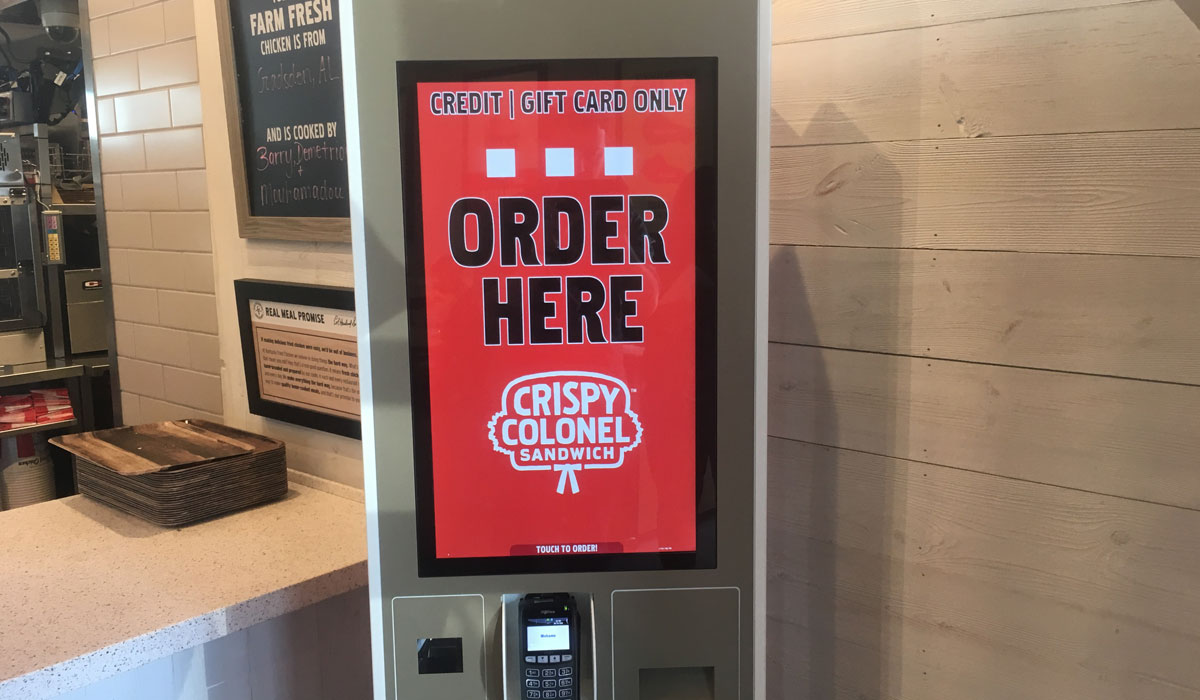When daydreaming about the future of the quick-service restaurant industry, one can imagine burger-flipping robots, food flying to the table via a drone or a robot rolling up to the table to take a customer’s order. Not so sadly, this isn’t the way the restaurant industry is heading. Instead, it’s going to be about maximizing the customer experience through the seamless integration of contactless technology.
In the past year, the pandemic has undoubtedly rocked the restaurant industry. The silver lining is that with the disruptions, gaps have appeared that created opportunities for restaurants to reassess what is working, what isn’t, and how to modernize the operation. Looking back since the start of the pandemic, more than any other sector, the restaurant and hospitality industry has taken this opportunity to better their customer experience. After all, restaurants are notoriously famous for operating on razor-thin margins, and now is the time to provide better service which means when operations open up fully, restaurants have a chance to boost their bottom line.
The need to modernize operations and adapt to pandemic-related changes alongside the industry’s pre-COVID pain points such as the high cost of staff turnover (hiring, training, retaining), inability to be more efficient at peak hours, order mix-ups, and high lease costs signal that the new era for quick-serves needs to feel very different. But not in the way you might think.
The quick-service restaurants that will begin to emerge will have leaner operations, focused on both on-premise and off-premises dining. More importantly, there is going to be a stronger first-party connection between restaurants and their guests, one that is more personalized and more satisfactory.
So what does the future look like?
The pandemic has made online purchasing a regular part of people’s daily lives. Now, customers have become accustomed to controlling how and when they purchase their goods.
The customer’s sense of control with their time has become integral to their experience–that is what makes quick-service so appealing. This control can be further reinforced by new technology that puts the power of the experience in the hands of the guests, creating a completely contactless self-service experience.
The new tech won’t replace or fully overtake every ordering and payment process. Its purpose is as an extra tool that can augment restaurant flows, improve efficiencies and speed up the ordering and payment processes overall.
Now the exciting part. Once restaurants start thinking about contactless technology, opportunities emerge to be very contextual and specific about offering or reminding guests about additional services. Right after a successful self-payment experience occurs, the tech can create a micro-moment to ask guests to rate their experience in the same interface. If done right, a huge amount of relevant data can be collected that explains why the guest has spent as much, tipped as much, or if they have the intention to come back. We can now gather operational data in terms of what is sold–like we would with POS transactions–but also experiential data in terms of the staff and venue’s service performance. This is great feedback for servers, managers, and HQ for further improvements of their offerings.
Technology like this gives another opportunity to offer loyalty points directly to the customer while they are in the moment. Giving incentives in real-time can increase order sizes, which in turn increases the check size. Another opportunity is the ability to up-sell items, by suggesting an item that pairs well with another, further increasing check sizes and providing an even greater customer service interaction.
Design-First, Tech-Enabled Operations
With the success of self-ordering kiosks, the quick-serve industry knows that guest-led experiences are the key to customer satisfaction for restaurants. The speed at which a restaurant needs to operate means that restaurants don’t always have full control over a single guest experience, but what they can do is set the stage for a fantastic experience. This includes store design, customer flow, seating, music, staff, lighting and interactive displays, but also supporting the restaurant operations, kitchen staff, and the technological tools that connect those operations streams.
In order to create that positive guest experience, restaurants need to have everything working behind the scenes.
By ensuring that orders are being submitted accurately, communicated to the kitchen staff and that all that information is integrated into other critical systems, the right technology can remove a myriad of pain points.
The next generation of quick-service restaurants and the true future of the dining experience is on track to be more meaningful and impactful than ever before. As customers start returning to their favorite restaurants to dine inside, the shift to a technology-backed, experienced-based restaurant industry will mark a true step forward for the industry by forging a direct connection to the customer, creating more meaningful relationships in the long term.
Laurent May is the Head of Ready, a fully integrated mobile self-ordering, payment and loyalty technology solution that’s defining the next generation of hospitality venues. He has over 20 years of product management expertise in the electronic payments space leading high performance teams.
Alen Puaca is the Design Director at Ready who in the past 25 years has worked on designs for virtual, online and physical spaces from EXPO pavilions, theme parks, museums, and Olympics. At Ready he is focused on the experiences that software can provide to enhance spaces within the hospitality domain.













